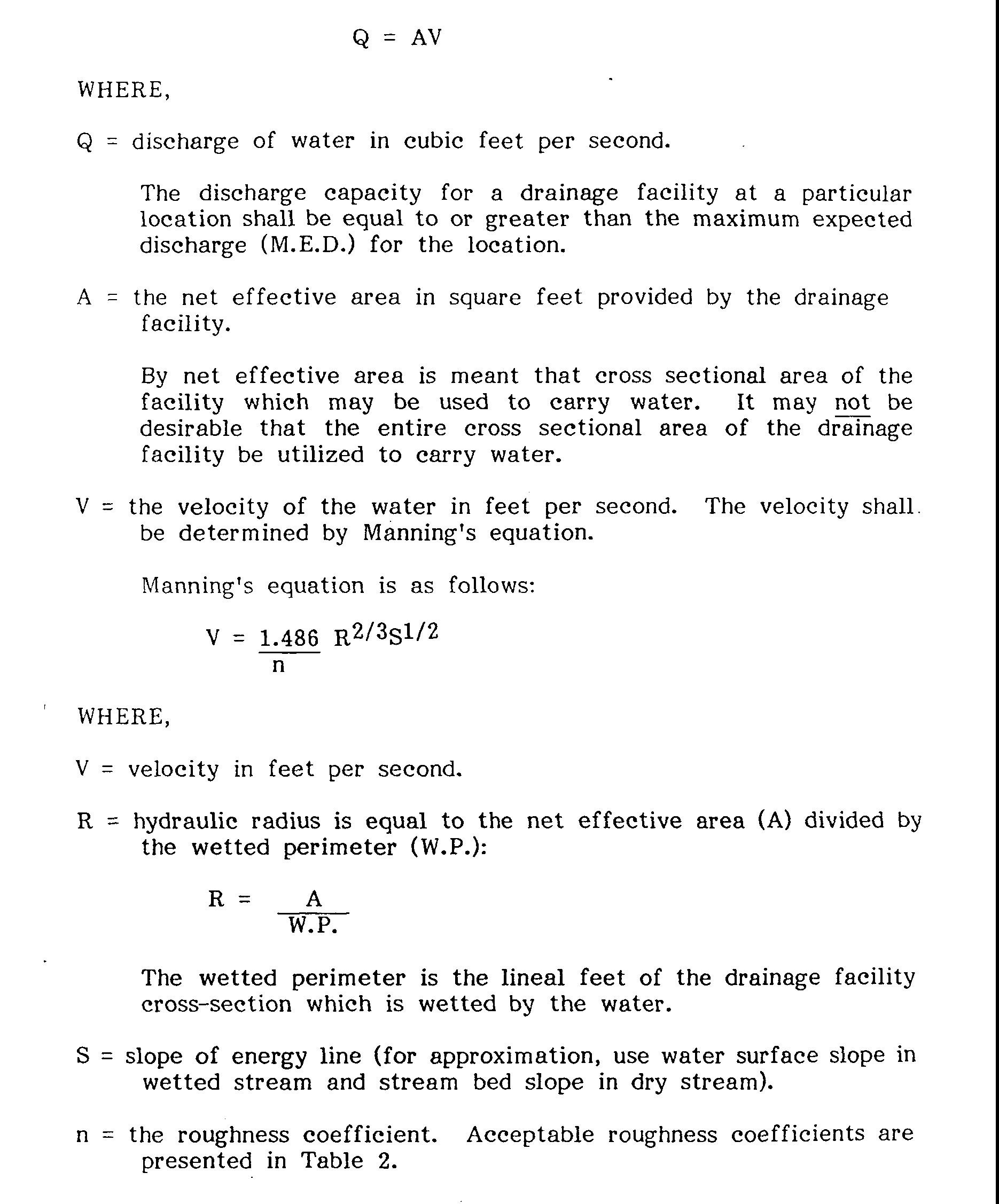7. The coefficients in these two tabulations are applicable for storms of ten year frequency and less. The coefficients are based on the assumption that the design storm does not occur when the ground is frozen. Less frequent, higher intensity storms will require the use of higher coefficients because infiltration and other losses have a proportionally smaller effect on run-off.�
8. For less frequent storms, the coefficients can be used if they are multiplied by the following factors for the return frequency required.�

9. Rainfall Intensity "I" curves are presented in Figure E. The curves provide for variation in rainfall intensity according to:�
a. Storm Frequency �
i. A ten (10) year storm frequency shall be used for the design of all storm water systems within the Township. �
ii. In all cases where storm drainage is picked up by means of a headwall or inlet structure, and inlet or outlet conditions control, the pipe shall be designed as a culvert for a twenty-five (25) year design storm.�
b. Storm Duration�
i. A five (5) minute storm duration shall be used if this duration does not result in a maximum expected discharge that exceeds the capacity of a 30-inch pipe.�
ii. If a five (5) minute storm duration results in a pipe size exceeding 30 inches, the time of concentration approach shall be used in determining storm duration. �
iii. If a five (5) minute storm duration results in a pipe size exceeding 30 inches, within any run of pipe, the time of concentration approach may be used for sizing of pipes from that point on by adjusting the time of concentration.�
Time of concentration may be defined as the interval of time required for water from the most remote portion of the drainage area to reach the point in question.�
c. Time of Concentration may be influenced by:�
i The type of terrain over which the water must flow. See Table. I for recommended average velocities of run-off flow. �
ii. Stream velocities - prior to reaching the point in question, the water may flow over land and subsequently flow into a stream. The stream velocities shall be calculated from Manning's Equation. (See C. below)�
iii. The time of concentration shall be determined by the above indicated criteria.�
3. Drainage Area "A" The extent of an individual drainage area shall be outlined on a map of highest order available and submitted in duplicate to the Township Engineer with the Design Calculations for Storm Sewers. The plan shall also indicate the IQ" anticipated at each proposed inlet and the slope of the street or swale used to compute the inlet capacity. Care should be taken to assure that all areas delivering run-off to the point under consideration shall be included.�

c. Capacity of Waterway Areas�
1. This section is primarily concerned with the removal of the water arriving at a particular location.�
It is necessary that the drainage facilities assisting in removal of water from the surface of the highway and adjacent ground have adequate capacity to do so.�
2. The capacity of the drainage facilities is measured in terms of discharge and may be determined by the equation of continuity:�
